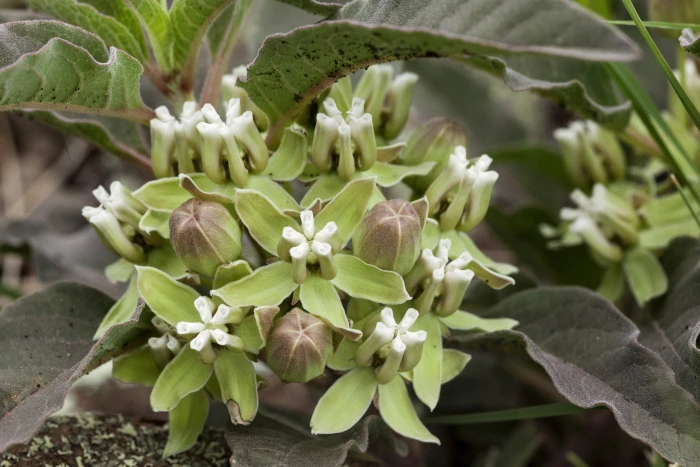Mojave Milkweed
(Asclepias nyctaginifolia)
Mojave Milkweed (Asclepias nyctaginifolia)
/
/

Cecelia Alexander
Public Domain
Image By:
Cecelia Alexander
Recorded By:
Copyright:
Public Domain
Copyright Notice:
Photo by: Cecelia Alexander | License Type: Public Domain | License URL: http://creativecommons.org/publicdomain/zero/1.0/ | Rights Holder: Cecelia Alexander | Publisher: iNaturalist | Date Created: 2016-08-12T16:05:51-07:00 |































Estimated Native Range
Climate Requirements for Medford, Oregon
| This Plant | Your Site | Plant Suitability for Your Location | ||
|---|---|---|---|---|
| • Precipitation | 5" - 23" | 20" | Your precipitation may be too high for this plant. | Too high |
| • High Temp. | 84°F - 108°F | 91°F | Your summer temperatures are normal for this plant. | Excellent |
| • Low Temp. | 16°F - 44°F | 31°F | Your winter temperatures are normal for this plant | Excellent |
This plant may not grow well at your location - your precipitation is too high.
Summary
Asclepias nyctaginifolia, commonly known as Mojave Milkweed, is a perennial herb that is evergreen or semi-deciduous, depending on water availability. It is native to desert washes, dry slopes, and scrublands in the Southwestern United States and Mexico, particularly in the Mojave and Sonoran Deserts. This species typically grows up to half a meter in height, with a tendency to bend or droop. Its thick, oval to lance-shaped leaves are arranged in opposite pairs along the stem and are slightly hairy, which helps reduce water loss. The inflorescence is a dense umbel up to 8 centimeters wide, with pink-tinted pale green flowers that attract pollinators, particularly butterflies, including the endangered Monarch butterfly. The fruit is a large follicle up to 9 centimeters long, containing seeds with silky tufts that are dispersed by the wind.
Mojave Milkweed is valued for its drought tolerance and its role as a host plant for Monarch butterflies, making it an excellent choice for xeriscaping and wildlife gardens. It thrives in full sun, requiring minimal water once established, and prefers well-drained soils. While it is not commonly used in traditional garden settings, its ecological importance and low maintenance make it a beneficial addition to naturalized areas and desert landscapes. It is rarely affected by diseases, but gardeners should be aware that it may not be as ornamental as other milkweed species.CC BY-SA 4.0
Mojave Milkweed is valued for its drought tolerance and its role as a host plant for Monarch butterflies, making it an excellent choice for xeriscaping and wildlife gardens. It thrives in full sun, requiring minimal water once established, and prefers well-drained soils. While it is not commonly used in traditional garden settings, its ecological importance and low maintenance make it a beneficial addition to naturalized areas and desert landscapes. It is rarely affected by diseases, but gardeners should be aware that it may not be as ornamental as other milkweed species.CC BY-SA 4.0
Plant Description
- Plant Type: Herb
- Height: 0.5-1.5 feet
- Width: 0.7-1.5 feet
- Growth Rate: Moderate
- Flower Color: Green, Pink, Cream
- Flowering Season: Spring, Summer
- Leaf Retention: Evergreen, Semi-Deciduous
Growth Requirements
- Sun: Full Sun
- Water: Low
- Drainage: Fast
Common Uses
Bee Garden, Bird Garden, Butterfly Garden, Deer Resistant, Fragrant, Hummingbird Garden, Low Maintenance
Natural Habitat
native to desert washes, dry slopes, and scrublands in the Southwestern United States and Mexico, particularly in the Mojave and Sonoran Deserts
Other Names
Common Names:
Scientific Names: Asclepias nyctaginifolia, Asclepias wrightii, Podostemma nyctaginifolium
GBIF Accepted Name: Asclepias nyctaginifolia A.Gray